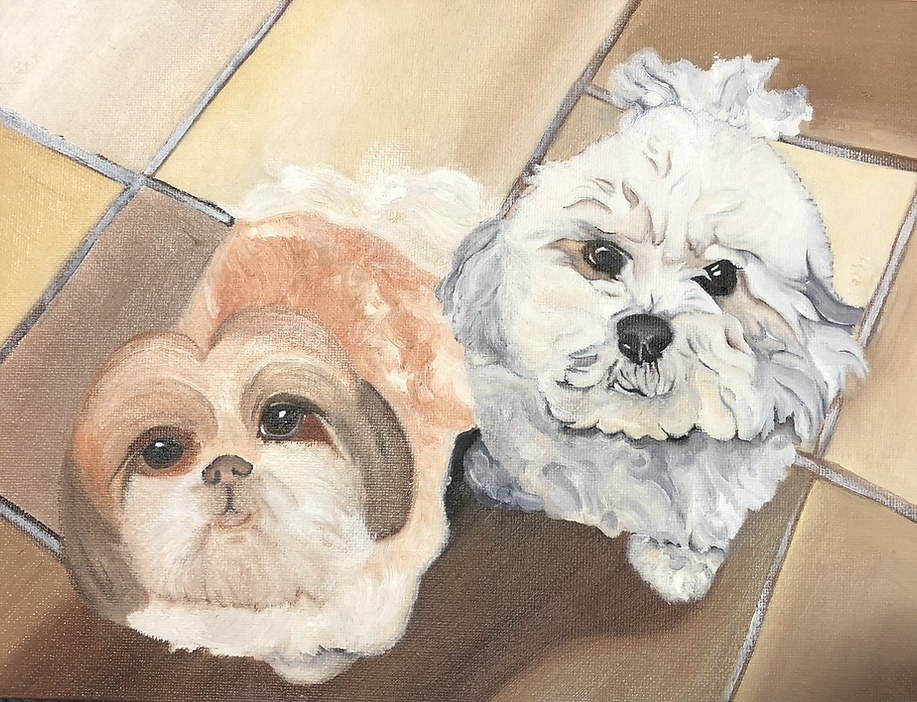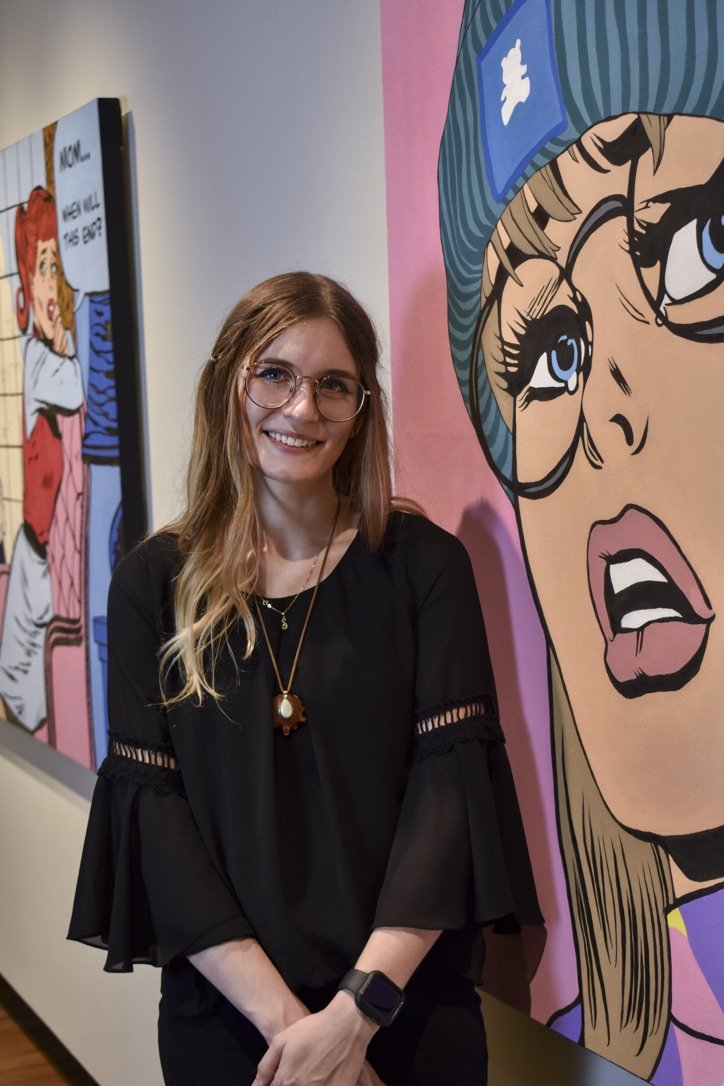
With the end of the academic semester comes a series of exhibitions in the Quigley Gallery from Western’s Art students. All Bachelors of Fine Arts (BFA) students are required to show a series of their work, but Sarah Ackerman, a senior Bachelor of Arts (BA) student graduating this December, chose to showcase her series entitled “Poparody,” currently on display through Dec. 16.
Ackerman was inspired by artists like Roy Lichtenstein and Andy Warhol, who worked in the pop art medium in the 1960s. Lichtenstein and Warhol were pioneering figures in the new art movement, and elevated popular (“pop”) art, previously considered to be an inferior artistic realm, to a form of fine art. Lichtenstein and Warhol utilized the pop art medium to parody and comment on everyday life and commercialized culture.
Lichtenstein rose to artistic prominence largely by pulling images from comic books, retooling them to create novel and fresh artistic pieces. Ackerman’s “Drowning Girl 2.0” is a modern play on Lichtenstein’s work, which he originally obtained from a romance comic strip.
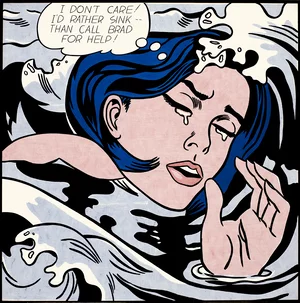
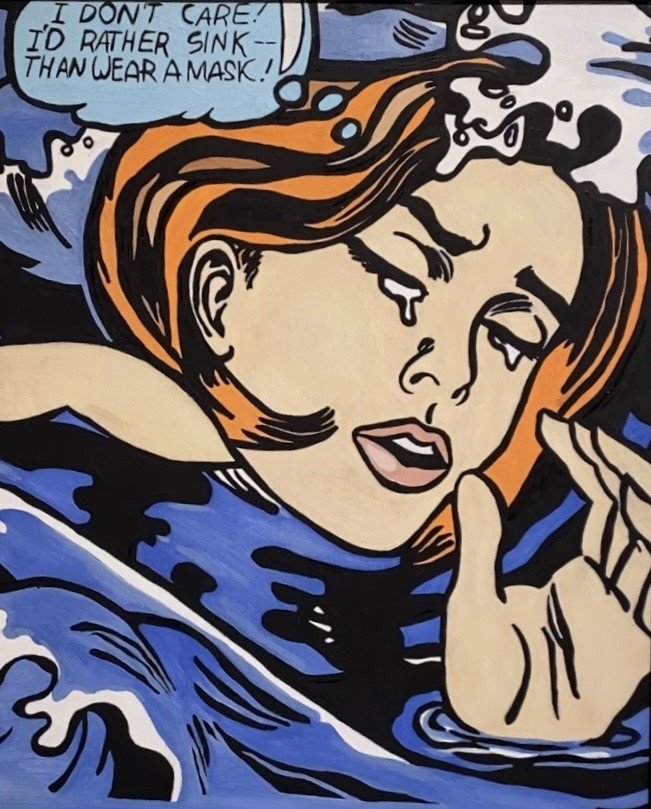
Ackerman found joy in jazzing up the colors from the original work, retaining an aesthetic associated with the 50s and 60s, but one that was more visually appealing to her eye. Warhol, likely the most renowned of the pop artists, famously created a piece entitled “Campbell’s Soup Cans” in 1962, toying with themes of commercial art.
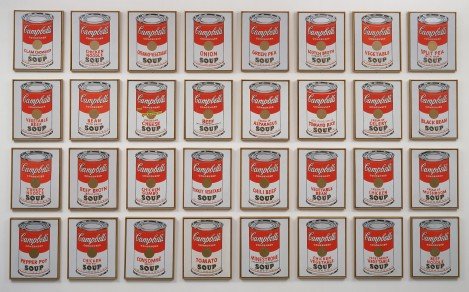
With “Poparody”, Ackerman uses pop art to tell a pertinent story about pandemic times. “My work pays homage to 60s pop artists, allowing the compositions to be seen in a new, contemporary perspective highlighting themes of feminist and the concept of “art from art”, Ackerman wrote in her artist statement. The four pieces in Ackerman’s series highlight common, everyday human experiences like forgetting your mask, and wondering when the pandemic will ever truly end.
To create these works, Ackerman riffles through comic books, pulling out bits and pieces from comic strips and scanning them. Once scanned, Ackerman begins altering the comic art in photoshop, creating collages of images and playing around with both the colors and general aesthetic.
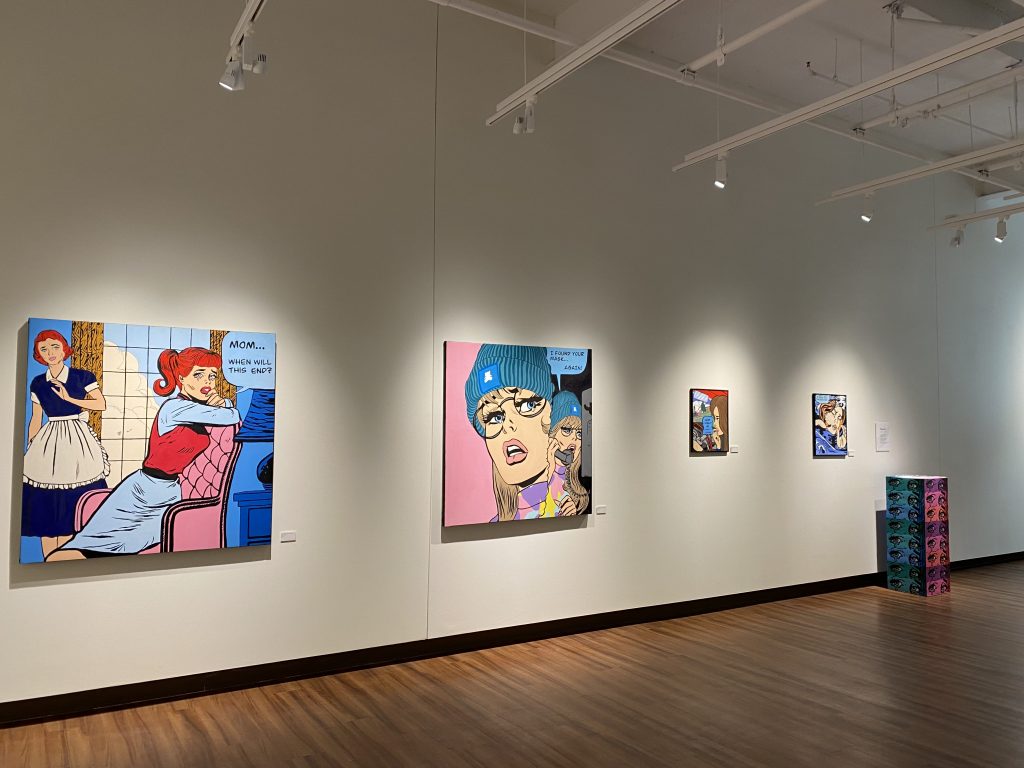
Oftentimes, the style of the piece changes entirely as Ackerman transforms blonde hair to red, changes yellow furniture to pink, or plays around with the eyebrows of the characters. These transformations got more dramatic as Ackerman worked through the series.
After the transformation had taken place, Ackerman blew up two of the exhibit’s pieces to 4’x4’ size, creating the final canvas utilizing pieces of plywood. Then, she transposed her photoshopped sketches onto the canvases, before painting over them with colors she creates herself to generate the final product you see in Quigley Hall.
The first piece Ackerman completed at the full 4’ by 4’ size, “Mask Mandate”, took about a year to come to fruition, including the extensive pre-planning process. The painting alone took nearly six months. “So much goes into preplanning, [and] that’s the part that no one sees,” says Ackerman.
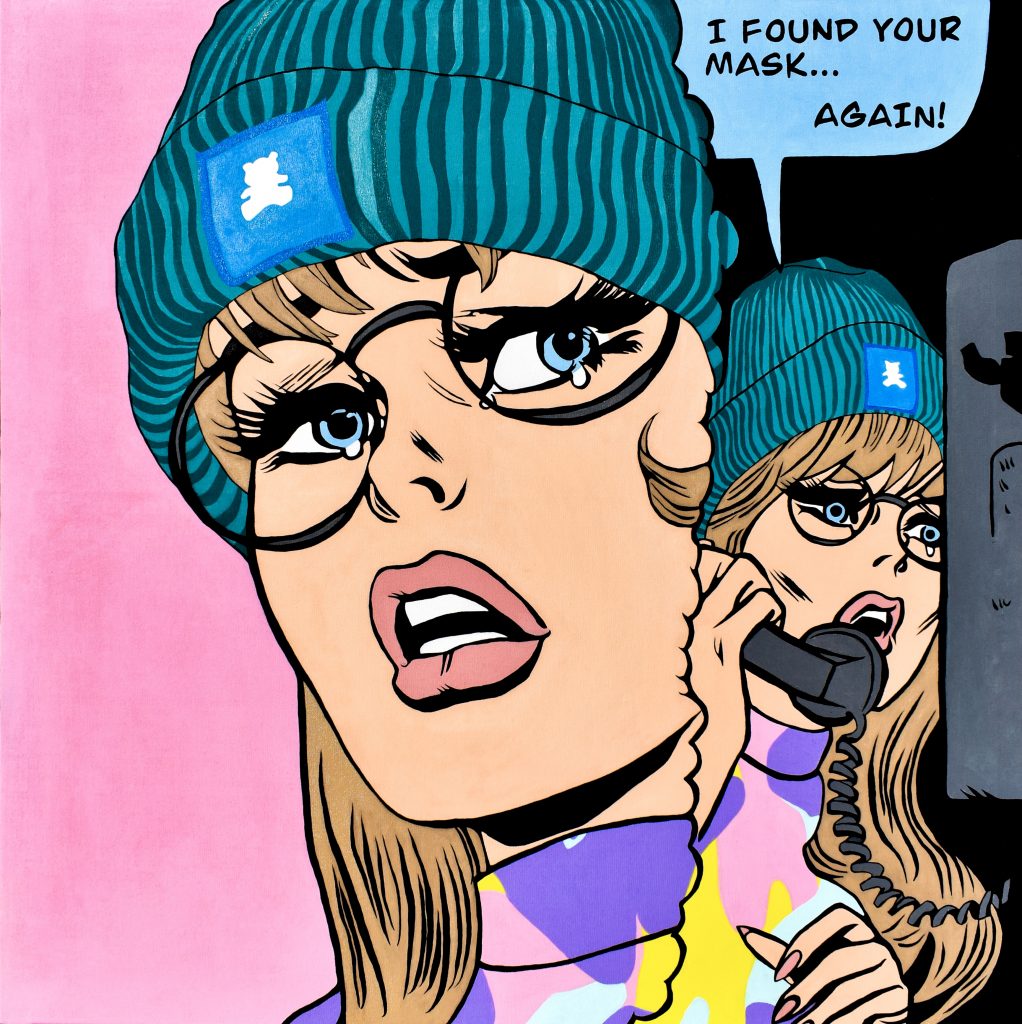
But it was “Drowning Girl 2.0” that was the first series piece Ackerman conceived of, and that work was later showcased at the juried art show for Western students at the Crested Butte Center for the Arts in April 2021.
The conception of that first piece got the ball rolling for Ackerman, and left her pondering what it would be like to create larger pieces: “How cool would it be if she was life-sized looking at you, experiencing what you’re experiencing?”
For Ackerman, the practice of pop art raises an interesting question of authenticity versus true originality. Ackerman demonstrates this dichotomy of authenticity versus originality by talking about painting a flower. She notes that there are already millions of flower paintings in the world, including many of the same types of flower, so there is little “original” ground to be explored.
Ackerman’s series rests on artistically riffing off of comic book strips to create authentic pieces of her own. “Ultimately, my series draws upon the idea of ‘art from art’, meaning that while there is no originality, there are original ways to express ideas, concepts, and philosophies,” Ackerman writes in her artist statement.

Ackerman goes on: “there’s a gray line between plagiarizing and heightening the work, creating this new experience… If you went and looked at the comic would you be able to tell where it came from?”
Ensuring her pieces are distinctive is key to retaining Ackerman’s confidence in her work, as is transparency with her audience. “For me, what makes authenticity is being honest about the fact that you’re getting these things from other places,” Ackerman says, “Since nothing is original, you need to be authentic.”
Ackerman admits there is a stigma around admitting that not everything about your work is wholly original, especially in the world of academia. But creating something wholly original is not the point of “Poparody”, or of other work in the pop art realm. The artistic purpose lies in the process of tweaking and playing with existing art, subjecting existing works to a multi-stage process where they naturally evolve and become more uniquely Ackerman’s in nature.
With “Poparody”, Ackerman is also exploring feminist concepts, parodying the emotionally unstable and unhinged women portrayed in romance comics and other forms of popular art. Ackerman notes that these portrayals haven’t changed much over the course of decades.
Today, women are still largely portrayed as the classic “damsel in distress”, or weeping over ever-present relationship woes. Ackerman found this topic ripe for artistic parody and pushback, and her pieces feature women crying over insignificant, everyday challenges, an all-too-common media trope.
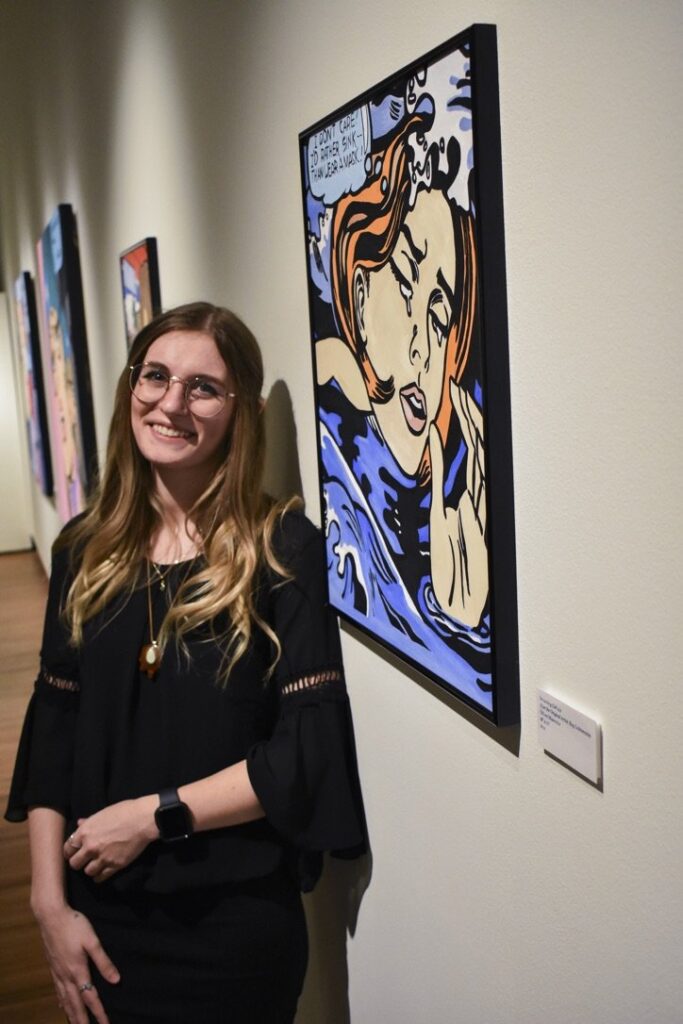
Ackerman is surprised to find her work displayed in the Quigley Gallery, having initially entered Western as an Environment and Sustainability (ENVS) major. She remembers taking Introduction to Art with Professor Emily Loehle, who initially asked Ackerman why she was not an art major in the Quigley Gallery her sophomore year.
Ackerman was anxious at first about going the art route, but Professor Loehle encouraged her to pair artistic studies with a business minor. Flash forward to 2021, and Ackerman is ready to graduate with her BA in Art (with an emphasis in Graphic Design) and an accompanying minor in Business.
Ackerman is quick to note her fondness for the collective sense of support built amongst the community of Western art students. “I mean you’re in the studio every weekend for 12 hours; you’re gonna get pretty close to these people.”
At Western, art students begin with pencil drawings and line drawings in their foundation courses, and aren’t allowed to use color in their first year. Moving into their second year, students are permitted to use some oil paints in their work, and to sculpt in mediums like clay and cardboard while perfecting the fundamentals of art.
After nailing the basics, students are encouraged to try various artistic pursuits and find their individual emphasis. For the Fall 2021 semester, Ackerman has her own studio space for her Advanced Painting IV course, where she works on the “Poparody” series.

Ackerman tried painting and ceramics before eventually landing on a passion for graphic design, although painting is certainly a competing love. “For me personally, oil paint was just the thing that I loved, and I was having so much fun connecting with it, and then my graphic design was falling on the backburner, until I realized that I could use my graphic design to enhance my painting abilities, and vice versa,” Ackerman says of the synergy between her favorite mediums.
While Ackerman has found a home in the Art Department, the Business Department has been profoundly important to Ackerman, both in a professional and personal sense. “I tell every art student: ‘you need to take a marketing class’, because it’s so important to know how to market yourself, and know your target market”, says Ackerman. The combination of business and marketing, graphic design, and painting skills Ackerman has accrued at Western leave her feeling confident with graduation just around the corner.
Ackerman has had a chance to hone her business skills via a pet sitting side business, which she has built up since 2014. In a similar canine vein, she also designed a book with information about different dog breeds.
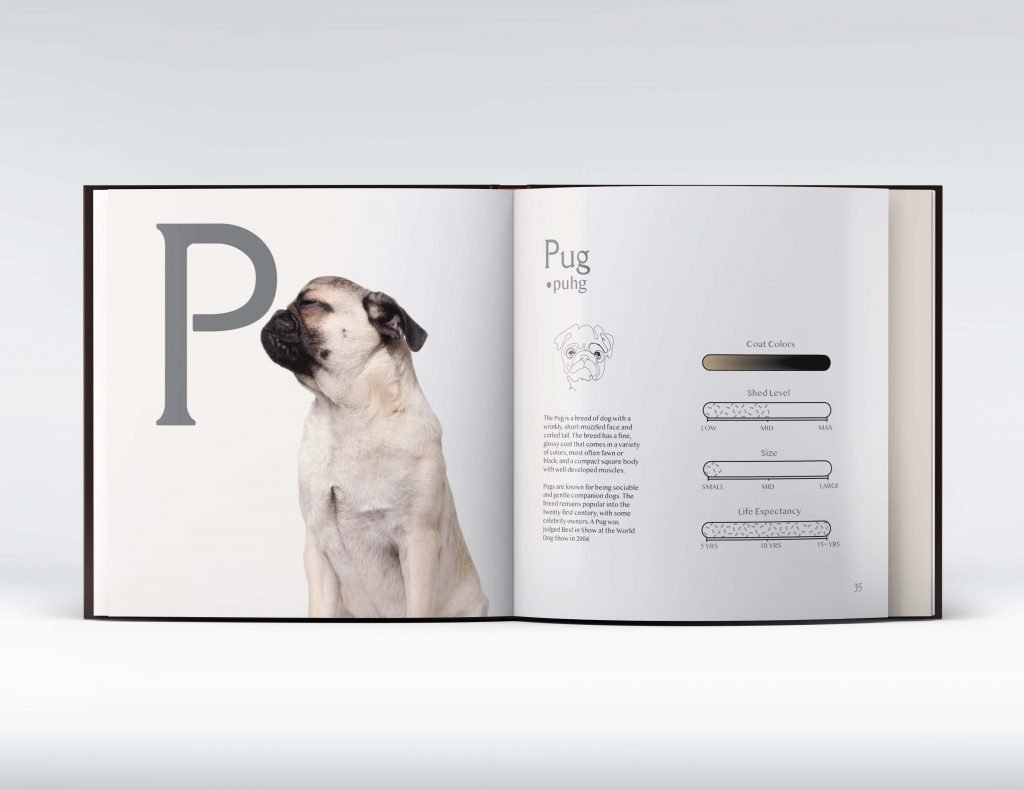
After her upcoming graduation, Ackerman will pursue graphic design commission work, and intends to seek full-time positions which combine her passions in design, painting, marketing, and organization. “I’m just looking for anything that will feed that hunger for organization,” she says.
Ackerman is undeniably passionate about art, wherever she finds it. She believes that the general public often don’t think of commercialized art as important, but she firmly maintains that it is. Ackerman notes it can be found all around us in the form of logos, posters and billboards, video advertisements, and many other mediums we encounter constantly. These works often require hundreds of painstaking hours on the part of graphic designers and other commercial art practitioners.
Without such everyday art, Ackerman claims that the world would be rendered largely bland and flat. Ackerman, armed with a multifaceted Western arts education and business savvy, is looking to stave off that blandness.
Ackerman’s “Poparody” will be on display in the Quigley Gallery through Dec. 16.
And if you’re interested in seeing more of Ackerman’s art, or commissioning work from her, you can do both via her website: https://www.ackerman-art.com/about
